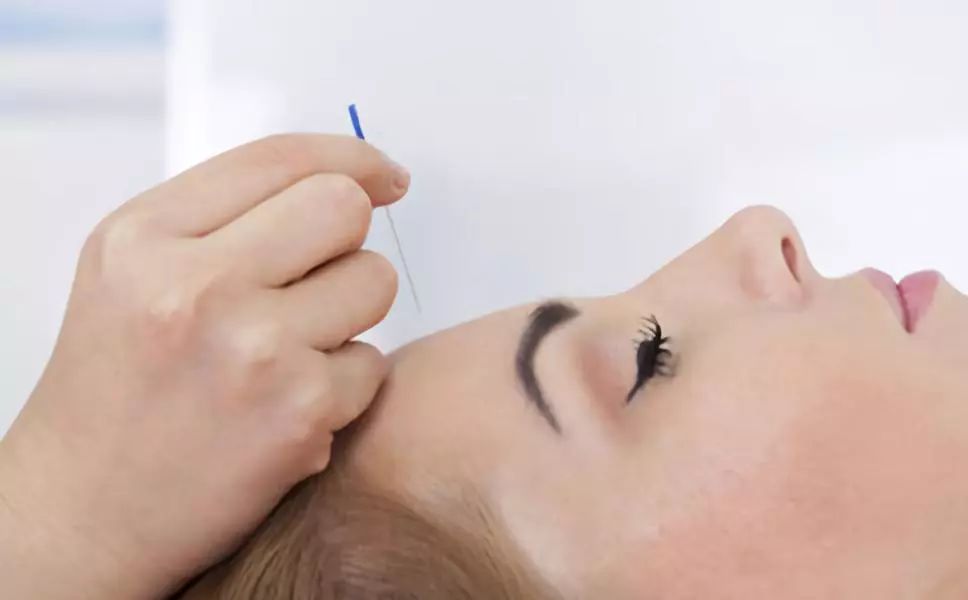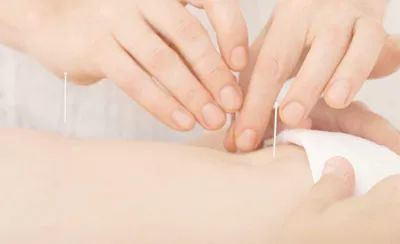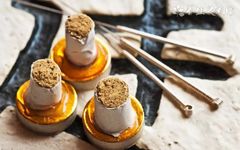★Compilation of TCM Learning Videos (Massage, Moxibustion, Gua Sha)
“Mugwort leaves retrieve the true fire of Yang, restoring the original Yang.”
— Li Shizhen, Compendium of Materia Medica
Moxibustion is a method of moxibustion therapy within Traditional Chinese Medicine (TCM).
It involves the use of moxa made from mugwort leaves to produce heat that stimulates acupuncture points or specific areas on the body, thereby activating the flow of Qi and adjusting the disordered physiological and biochemical functions of the body, ultimately achieving the goals of disease prevention and treatment.
Moxibustion originated in ancient China, as its mechanism of action is similar to acupuncture, and it complements acupuncture in therapeutic effects. Therefore, it is often referred to as acupuncture and moxibustion.
While acupuncture has a profound influence both domestically and internationally, in modern times, when people refer to moxibustion, they often mean acupuncture, with little mention of moxibustion itself.


Based on the characteristics of its effects and the diseases it treats, the warming effects of moxibustion can be summarized into the following ten aspects:
01
Warming and Unblocking Effect
The Spiritual Pivot states: “When the fire energy is unblocked, the blood vessels will flow.”
The Classic of Moxibustion states: “Moxibustion warms the meridians, promotes the flow of Qi and blood, allowing the stagnant to flow and the obstructed to move.”
“Unblocking” refers to smoothness, benefit, and accessibility.The heat from moxibustion can invigorate the Qi of the organs and promote blood circulation.The warming stimulation applied to specific acupuncture points can treat various conditions of Qi and blood stagnation, and the clinical effect formed is known as the warming and unblocking effect.
Modern research indicates that moxibustion is effective in treating pain-related diseases caused by Qi stagnation and blood stasis, which can be understood from a TCM perspective as the warming and unblocking effect of moxibustion.This is mainly used for various pain syndromes, diseases characterized by swelling (such as abdominal distension), and conditions caused by Qi stagnation (such as constipation due to Qi stagnation).Clinically, it can be applied locally, along the meridians, or symptomatically.
02
Warming the Meridians Effect
Zhu Danxi said: “When blood encounters heat, it flows; when it encounters cold, it coagulates.” When Qi is warm, blood flows smoothly; when Qi is cold, blood becomes viscous; cold causes Qi to contract.
The Spiritual Pivot states: “When the blood in the pulse coagulates and stops, it cannot be released without fire.”
The meridians refer to the channels, and warming the meridians specifically addresses the cold coagulation in the meridians of the limbs. Cold is characterized by contraction, stagnation, and obstruction. Symptoms of diseases caused by cold obstructing the meridians often include cold sensations, shivering, pain, stiffness, contraction, and pallor. The warming nature of moxibustion has a good therapeutic effect on various manifestations of cold stagnation in the meridians caused by external cold invasion or Yang deficiency that cannot warm the body, which can be termed the warming the meridians effect of moxibustion.
The warming the meridians effect is mainly used for conditions such as wind-cold-damp bi syndrome, cold coagulation in the extremities, chilblains, Raynaud’s disease, osteoporosis, and limb cramps.Clinically, it focuses on moxibustion at specific points on the limbs, local moxibustion, and moxibustion along the meridians.For chronic conditions or those affecting the whole body, it can be combined with moxibustion at the back-shu points, governing vessel, and conception vessel points.
03
Warming and Moistening Effect
Moistening is the opposite of dryness and Yin deficiency.Yin deficiency leads to dryness, and fluid deficiency leads to dryness.Although moxibustion is warm in nature, when used appropriately, it can also produce effects of nourishing Yin and generating fluids or promoting the distribution of body fluids, which is known as the warming and moistening effect of moxibustion.The warming and moistening effect of moxibustion is mainly reflected in two aspects:
Firstly, in cases of insufficient Yin fluids.The body cannot generate Yin without Yang, and without Yin, Yang cannot thrive.Moxibustion invigorates Yang Qi to promote Yin generation and nourish Yin fluids.
Secondly, in cases of fluid deficiency, which may be due to fluid loss, Qi deficiency, Qi stagnation, Yang obstruction, or dampness obstruction.Moxibustion can benefit Yang Qi, invigorate Qi movement, disperse damp stagnation, eliminate Yin obstruction, distribute body fluids, and promote fluid generation.
Both of these are sufficient to moisten dryness and benefit Yin.
The warming and moistening effect is mainly used for various Yin deficiency conditions without severe internal heat;fluid deficiency;dampness obstruction with fluid stagnation;and dry conditions such as dry syndrome.Clinically, it is advisable to apply moxibustion based on syndrome differentiation, particularly at the back-shu points, combined with symptomatic and local moxibustion (for example, moxibustion around the eyes for dry eye syndrome).

04
Warming and Rising Effect
The Spiritual Pivot states: “For conditions that are sunken, moxibustion should be applied.”
The Spiritual Pivot states: “For conditions that are sunken, moxibustion should be applied.”
The Spiritual Pivot states: “For conditions that are sunken, fire should be applied.”
The Treatise on Cold Damage states: “In Shaoyin disease with vomiting and diarrhea, cold hands and feet, if the pulse is not present, moxibustion should be applied to the Shaoyin points.”
The warming and rising effect specifically addresses conditions of sinking.Sinking conditions include three aspects:
Firstly, anatomical conditions where the internal organs are physically displaced downwards;
Secondly, functional conditions where the distinction between clear and turbid is not maintained;
Thirdly, critical conditions of Yang deficiency.
The warming and rising effect is mainly used for conditions of middle Qi deficiency, organ prolapse such as gastric prolapse, kidney prolapse, uterine prolapse, and rectal prolapse;conditions where clear Yang does not rise, and clear and turbid are mixed, such as chronic diarrhea, dysentery, dizziness, and fainting, as well as conditions of pulse deficiency and meridian sinking.Clinically, it is primarily applied to the corresponding back-shu points, front-mu points, and specific points, with syndrome differentiation and symptomatic point selection for moxibustion.
05
Warming and Descending Effect
The Plain Questions states: “What is above should descend.”
The Plain Questions states: “When the five organs are not harmonious, the seven orifices will not be open.” This sufficiently illustrates the harm of Qi rising in the organs;
The Spiritual Pivot states: “When the six fu organs are not in harmony, they will lead to abscesses.”
The Plain Questions also states: “The six fu organs are responsible for the transmission and transformation of substances and do not store.”
The descending effect addresses clinical conditions where Qi should descend but does not.The five organs are primarily responsible for guarding and storing, while the six fu organs are responsible for descending and harmonizing.When Qi should descend but does not, disease will arise, and upward Qi movement will lead to illness.

Physiologically, the fu organs function through communication, while functionally, they should descend to maintain harmony and normalcy.The warming and descending effect of moxibustion can help to lower turbid Qi, harmonize Yin and Yang, and normalize the functions of the fu organs.For example, when using moxibustion to treat hiccups caused by dietary indiscretion, liver Qi invading the stomach, or stomach cold, applying moxibustion to the middle front-mu point of the stomach has shown excellent results, all due to the warming and descending effect of moxibustion acting on the key aspect of stomach Qi rising.
The warming and descending effect is mainly used for cough, asthma, hemoptysis, and epistaxis due to lung Qi rising;hypochondriac distension, dizziness, and vertigo due to liver Qi rising;and vomiting, hiccups, belching, acid reflux, and hematemesis due to stomach Qi rising.Clinically, it is focused on moxibustion at the back-shu points, front-mu points, and specific points based on the differences in organ pathology and symptoms, combined with local or symptomatic moxibustion.

☞☞ Join the 【Beauty Industry Practitioners WeChat Group】 to exchange and learn with beauty professionals nationwide!Click here

